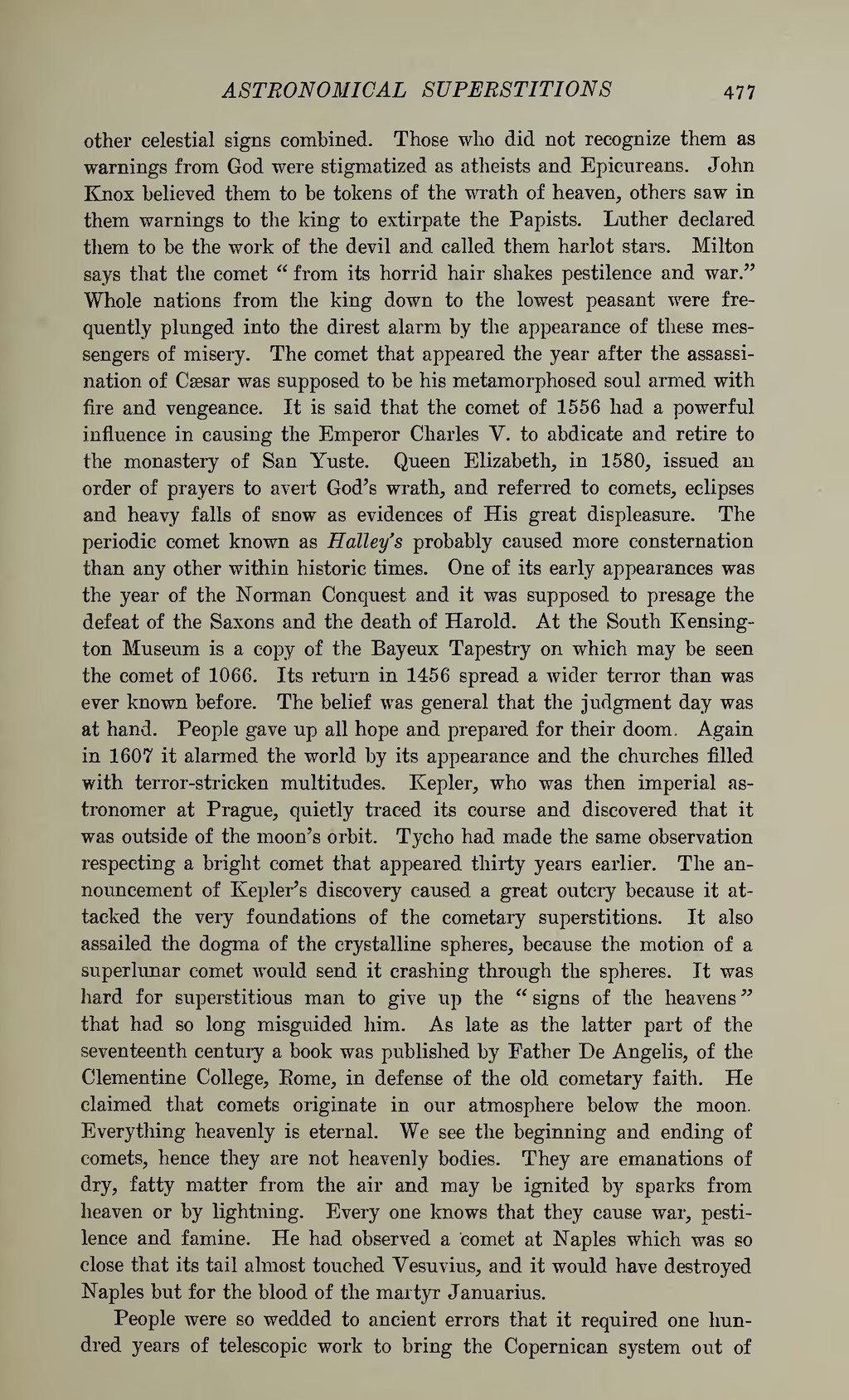other celestial signs combined. Those who did not recognize them as warnings from God were stigmatized as atheists and Epicureans. John Knox believed them to be tokens of the wrath of heaven, others saw in them warnings to the king to extirpate the Papists. Luther declared them to be the work of the devil and called them harlot stars. Milton says that the comet "from its horrid hair shakes pestilence and war." Whole nations from the king down to the lowest peasant were frequently plunged into the direst alarm by the appearance of these messengers of misery. The comet that appeared the year after the assassination of Cæsar was supposed to be his metamorphosed soul armed with fire and vengeance. It is said that the comet of 1556 had a powerful influence in causing the Emperor Charles V. to abdicate and retire to the monastery of San Yuste. Queen Elizabeth, in 1580, issued an order of prayers to avert God's wrath, and referred to comets, eclipses and heavy falls of snow as evidences of His great displeasure. The periodic comet known as Halley's probably caused more consternation than any other within historic times. One of its early appearances was the year of the Norman Conquest and it was supposed to presage the defeat of the Saxons and the death of Harold. At the South Kensington Museum is a copy of the Bayeux Tapestry on which may be seen the comet of 1066. Its return in 1456 spread a wider terror than was ever known before. The belief was general that the judgment day was at hand. People gave up all hope and prepared for their doom. Again in 1607 it alarmed the world by its appearance and the churches filled with terror-stricken multitudes. Kepler, who was then imperial astronomer at Prague, quietly traced its course and discovered that it was outside of the moon's orbit. Tycho had made the same observation respecting a bright comet that appeared thirty years earlier. The announcement of Kepler's discovery caused a great outcry because it attacked the very foundations of the cometary superstitions. It also assailed the dogma of the crystalline spheres, because the motion of a superlunar comet would send it crashing through the spheres. It was hard for superstitious man to give up the "signs of the heavens" that had so long misguided him. As late as the latter part of the seventeenth century a book was published by Father De Angelis, of the Clementine College, Rome, in defense of the old cometary faith. He claimed that comets originate in our atmosphere below the moon. Everything heavenly is eternal. We see the beginning and ending of comets, hence they are not heavenly bodies. They are emanations of dry, fatty matter from the air and may be ignited by sparks from heaven or by lightning. Every one knows that they cause war, pestilence and famine. He had observed a comet at Naples which was so close that its tail almost touched Vesuvius, and it would have destroyed Naples but for the blood of the martyr Januarius.
People were so wedded to ancient errors that it required one hundred years of telescopic work to bring the Copernican system out of
